Thermal Environment Characteristics of Local Climate Zones Based on Summer Stage Subdivision: An Observational Study in Shenyang, China
Abstract
1. Introduction
2. Materials and Methods
2.1. Study Area
2.2. LCZ Mapping
2.3. Data Acquisition
2.3.1. Air Temperature Measurement
2.3.2. Meteorological Observation Data
2.4. Temperature-Based Indices
2.4.1. Calculation of UHII
2.4.2. Heat and Cool Island Degree-Hours
2.4.3. Cooling/Warming Rates (0.5 h)
2.4.4. Rates of Change in UHII (0.5 h)
3. Result
3.1. Thermal Environment Characteristics of Each LCZ During the Entire Summer
3.1.1. Hourly UHII
3.1.2. Frequencies of Heat and Cool Island Events
3.2. Thermal Environment Characteristics of Each LCZ at Different Summer Stages
3.2.1. Basis for Stage Subdivision of Summer
3.2.2. Characteristics of Temperature and Heat Island Intensity Changes in Four Summer Phases
4. Discussion
4.1. Differences in UHI Across LCZs
4.2. Regional Differences in UHII in the Summer
4.3. Seasonal Differences in UHII
4.4. Limitations and Prospects
5. Conclusions
- In terms of UHII, the summer UHI effect in Shenyang is characterized by higher intensity during nighttime and weakens significantly during the daytime. During nighttime, the UHII of built-type LCZs is higher than that of land cover-type LCZs. LCZ 2 and 4 show the highest UHII, at 7.6 °C and 5.4 °C. During the daytime, as summer progresses, the UCI effect in all LCZs gradually strengthens. LCZ 10 exhibits the most frequent daytime UCI effects among built-type LCZs. Further stage subdivision shows that, during daytime, the UCI effect in built-type LCZs persists longer in peak-summer and late-summer. LCZ A demonstrates a significant UCI effect across all four stages, with the strongest UHII reaching −2.8 °C at 09:00 in late summer. During nighttime, the UHII of each LCZ in late-summer was higher than in the other three summer stages.
- In terms of UHII based on the stage subdivision of summer, each LCZ gradually increased from early-summer to peak-summer, but dropped significantly in late-summer. During daytime, temperatures in each stage showed a trend of first rising and then falling, reaching a peak around 15:30, with LCZ 4 reaching the highest temperature of 32.7 °C. During nighttime, temperatures in each LCZ continued to decline throughout the four summer stages, but at a slow rate.
- In terms of cooling/cooling rates based on the stage subdivision of summer, the fluctuations for each LCZ were minimal in mid-summer, resulting in generally stable fluctuations. During daytime, LCZ D experienced the most significant fluctuations among all LCZs, with the most dramatic fluctuations occurring in late-summer, within a range of approximately ±1.5 °C/0.5 h. During nighttime, LCZ 2 and 4 exhibited more gradual cooling/warming rates in early-summer, peak-summer, and late-summer compared to the other LCZs. LCZ A exhibited the most dramatic fluctuations in cooling/warming rates during peak-summer and late-summer.
- In terms of UHII change rates based on the stage subdivision of summer, the fluctuations for each LCZ were most dramatic in early-summer and late-summer. In contrast, the UHII of built-type LCZs varied more gradually in mid-summer. During daytime, all LCZs experienced significant fluctuations in the four summer stages. The fluctuations in UHII for LCZ 6 were more pronounced than those for other LCZs across the four summer stages. During nighttime, the UHII of built-type LCZs varied more gradually in mid-summer and peak-summer.
Author Contributions
Funding
Data Availability Statement
Conflicts of Interest
References
- Grimm, N.B.; Faeth, S.H.; Golubiewski, N.E.; Redman, C.L.; Wu, J.; Bai, X.; Briggs, J.M. Globl change and the ecology of cities. Science 2008, 319, 756–760. [Google Scholar] [CrossRef] [PubMed]
- Oke, T.R.; Mills, G.; Christen, A.; Voogt, J.A. Urban Climates; Cambridge University Press: Cambridge, UK, 2017. [Google Scholar]
- Kabano, P.; Lindley, S.; Harris, A. Evidence of urban heat island impacts on the vegetation growing season length in a tropical city. Landsc. Urban Plan. 2021, 206, 103989. [Google Scholar] [CrossRef]
- Zhao, C.; Weng, Q.; Wang, Y.; Hu, Z.; Wu, C. Use of local climate zones to assess the spatiotemporal variations of urban vegetation phenology in Austin, Texas, USA. GISci. Remote Sens. 2022, 59, 393–409. [Google Scholar] [CrossRef]
- He, B.-J.; Wang, J.; Zhu, J.; Qi, J. Beating the urban heat: Situation, background, impacts and the way forward in China. Renew. Sustain. Energy Rev. 2022, 161, 112350. [Google Scholar] [CrossRef]
- Oke, T.R. The energetic basis of the urban heat island. Q. J. R. Meteorol. Soc. 1982, 108, 1–24. [Google Scholar] [CrossRef]
- Arnfield, A.J. Two decades of urban climate research: A review of turbulence, exchanges of energy and water, and the urban heat island. Int. J. Climatol. 2003, 23, 1–26. [Google Scholar] [CrossRef]
- Watts, N.; Amann, M.; Ayeb-Karlsson, S.; Belesova, K.; Bouley, T.; Boykoff, M.; Costello, A. The Lancet Countdown on health and climate change: From 25 years of inaction to a global transformation for public health. Lancet 2018, 391, 581–630. [Google Scholar] [CrossRef]
- Xu, R.; Yu, P.; Abramson, M.J.; Johnston, F.H.; Samet, J.M.; Bell, M.L.; Guo, Y. Wildfires, global climate change, and human health. N. Engl. J. Med. 2020, 383, 2173–2181. [Google Scholar] [CrossRef]
- Lyu, K.; Licina, D.; Wienold, J.; Tehrani, H.K.; Khovalyg, D. A multidomain approach to neighbourhood typology for urban environmental studies. Sustain. Cities Soc. 2025, 128, 106378. [Google Scholar] [CrossRef]
- Stewart, I.D.; Oke, T.R. Local climate zones for urban temperature studies. Bull. Am. Meteorol. Soc. 2012, 93, 1879–1900. [Google Scholar] [CrossRef]
- Stewart, I.D.; Oke, T.R.; Krayenhoff, E.S. Evaluation of the ‘local climate zone’ scheme using temperature observations and model simulations. Int. J. Climatol. 2014, 34, 1062–1080. [Google Scholar] [CrossRef]
- Leconte, F.; Bouyer, J.; Claverie, R.; Pétrissans, M. Estimation of spatial air temperature distribution at sub-mesoclimatic scale using the LCZ scheme and mobile measurements. In Proceedings of the 9th International Conference on Urban Climate (ICUC), Toulouse, France, 20–24 July 2015. [Google Scholar]
- Chen, F.; Huang, Y. A new comparative analysis of local urban morphology based on local climate zones: A study using mobile surveys in Chengdu tested. In Proceedings of the 25th International Seminar on Urban Form (ISUF), Krasnoyarsk, Russia, 5–9 July 2018. [Google Scholar]
- Bokwa, A.; Dobrovolny, P.; Gal, T.; Geletič, J.; Gál, C.; Hajto, M.; Hollósi, B.; Kielar, R.; Lehnert, M.; Škarbit, N.; et al. Modelling the impact of climate change on heat load increase in Central European cities. In Proceedings of the 9th International Conference on Urban Climate (ICUC), Toulouse, France, 20–24 July 2015. [Google Scholar]
- Skarbit, N.; Gál, T. Projection of intra-urban modification of nighttime climate indices during the 21st century. Hung. Geogr. Bull. 2016, 65, 181–193. [Google Scholar] [CrossRef]
- Sharma, R.; Hooyberghs, H.; Lauwaet, D.; De Ridder, K. Urban heat island and future climate change—Implications for Delhi’s heat. J. Urban Health 2019, 96, 235–251. [Google Scholar] [CrossRef] [PubMed]
- Grunwald, L.; Kossmann, M.; Weber, S. Mapping urban cold- air paths in a Central European city using numerical modelling and geospatial analysis. Urban Clim. 2019, 29, 100503. [Google Scholar] [CrossRef]
- Yang, X.; Yao, L.; Peng, L.L.; Jiang, Z.; Jin, T.; Zhao, L. Evaluation of a diagnostic equation for the daily maximum urban heat island intensity and its application to building energy simulations. Energy Build. 2019, 193, 160–173. [Google Scholar] [CrossRef]
- Middel, A.; Häb, K.; Brazel, A.J.; Martin, C.A.; Guhathakurta, S. Impact of urban form and design on mid-afternoon microclimate in Phoenix Local Climate Zones. Landsc. Urban Plan. 2014, 122, 16–28. [Google Scholar] [CrossRef]
- Chatterjee, S.; Khan, A.; Dinda, A.; Mithun, S.M.; Khatun, R.; Akbari, H.; Kusaka, H.; Mitra, C.; Bhatti, S.S.; Doan, Q.V.; et al. Simulating micro-scale thermal interactions in different building environments for mitigating urban heat islands. Sci. Total Environ. 2019, 663, 610–631. [Google Scholar] [CrossRef]
- Long, N.; Gardes, T.; Hidalgo, J.; Masson, V.; Schoetter, R. Influence of urban morphology on urban heat island intensity: An approach based on Local Climate Zone classification. PeerJ Prepr. 2018, 6, e27208v1. [Google Scholar] [CrossRef]
- Geletič, J.; Lehnert, M.; Dobrovolný, P. Modelled spatio-temporal variability of air temperature in an urban climate and its validation: A case study of Brno, Czech Republic. Hung. Geogr. Bull. 2016, 65, 169–180. [Google Scholar] [CrossRef]
- Gál, T.; Skarbit, N.; Molnár, G.; Unger, J. Weather and climate modeling possibilities using local climate zone concept and observation network in Szeged, Hungary. In Proceedings of the 10th International Conference on Urban Climate (ICUC), New York, NY, USA, 6–10 August 2018. [Google Scholar]
- Verdonck, M.-L.; Demuzere, M.; Hooyberghs, H.; Beck, C.; Cyrys, J.; Schneider, A.; Dewulf, R.; Van Coillie, F. The potential of local climate zones maps as a heat stress assessment tool, supported by simulated air temperature data. Landsc. Urban Plan. 2018, 178, 183–197. [Google Scholar] [CrossRef]
- Brousse, O.; Martilli, A.; Foley, M.; Mills, G.; Bechtel, B. WUDAPT, an efficient land use producing data tool for mesoscale models? Integration of urban LCZ in WRF over Madrid. Urban Clim. 2016, 17, 116–134. [Google Scholar] [CrossRef]
- Ren, C.; Fung, J.C.H.; Tse, J.W.P.; Ng, E. Implementing WUDAPT product into urban development impact analysis by using WRF simulation result: A case study of the Pearl River Delta Region (1980–2010). In Proceedings of the 13th Symposium of the Urban Environment, Seattle, WA, USA, 21–25 January 2018. [Google Scholar]
- Hammerberg, K.; Brousse, O.; Martilli, A.; Mahdavi, A. Implications of employing detailed urban canopy parameters for mesoscale climate modelling: A comparison between WUDAPT and GIS databases over Vienna, Austria. Int. J. Climatol. 2018, 38, e1241–e1257. [Google Scholar] [CrossRef]
- Ren, J.; Shi, K.; Kong, X.; Zhou, H. On-site measurement and numerical simulation study on characteristic of urban heat island in a multi-block region in Beijing, China. Sustain. Cities Soc. 2023, 95, 104615. [Google Scholar] [CrossRef]
- Köppen, W. Das geographische System der Klimate. In Handbuch der Klimatologie; Köppen, I.W., Geiger, G., Eds.; Gebrüder Borntraeger: Stuttgart, Germany, 1936; pp. 1–44. [Google Scholar]
- Núnez-Peiro, M.; Sanchez-Guevara, C.; Neila, G.F.J. Hourly evolution of intra-urban temperature variability across the local climate zones. The case of Madrid. Urban Clim. 2021, 39, 100921. [Google Scholar] [CrossRef]
- Badaro-Saliba, N.; Adjizian-Gerard, J.; Zaarour, R.; Najjar, G. LCZ scheme for assessing Urban Heat Island intensity in a complex urban area (Beirut, Lebanon). Urban Clim. 2021, 37, 100846. [Google Scholar] [CrossRef]
- Cilek, M.U.; Cilek, A. Analyses of land surface temperature (LST) variability among local climate zones (LCZs) comparing Landsat-8 and ENVI-met model data. Sustain. Cities Soc. 2021, 69, 102877. [Google Scholar] [CrossRef]
- Anjos, M.; Targino, A.C.; Krecl, P.; Oukawa, G.Y.; Braga, R.F. Analysis of the urban heat island under different synoptic patterns using local climate zones. Build. Environ. 2020, 185, 107268. [Google Scholar] [CrossRef]
- Chen, G.; Chen, Y.; Tan, X.; Zhao, L.; Cai, Y.; Li, L. Assessing the urban heat island effect of different local climate zones in Guangzhou, China. Build. Environ. 2023, 244, 110770. [Google Scholar] [CrossRef]
- Chen, G.; Li, N.; Cai, Y.; He, M. Analysis of the Characteristics of Heat Island Intensity Based on LCZ in the Summer of Guangzhou. Build. Sci. 2021, 37, 96–104. [Google Scholar] [CrossRef]
- Chen, G.; He, H.; Chen, Y.; Zhao, L.; Cai, Y.; Ma, Y. Applying a diagnostic equation for maximum urban heat island intensity based on local climate zones for Guangzhou, China. Build. Environ. 2023, 228, 109817. [Google Scholar] [CrossRef]
- Yang, X.; Yao, L.; Jin, T.; Peng, L.L.; Jiang, Z.; Hu, Z.; Ye, Y. Assessing the thermal behavior of different local climate zones in the Nanjing metropolis, China. Build. Environ. 2018, 137, 171–184. [Google Scholar] [CrossRef]
- Yang, X.; Yao, L.; Jin, T.; Jiang, Z.; Peng, L.; Ye, Y. Temporal and spatial variations of local temperatures in the summer of Nanjing. J. Civ. Environ. Eng. 2019, 41, 160–167. [Google Scholar] [CrossRef]
- O’Malley, C.; Kikumoto, H. An investigation into heat storage by adopting local climate zones and nocturnal-diurnal urban heat island differences in the Tokyo Prefecture. Sustain. Cities Soc. 2022, 83, 103959. [Google Scholar] [CrossRef]
- Alexander, P.; Mills, G. Local climate classification and Dublin’s urban heat island. Atmosphere 2014, 5, 755–774. [Google Scholar] [CrossRef]
- Leconte, F.; Bouyer, J.; Claverie, R.; Pétrissans, M. Using local climate zone scheme for UHI assessment: Evaluation of the method using mobile measurements. Build. Environ. 2015, 83, 39–49. [Google Scholar] [CrossRef]
- Beck, C.; Straub, A.; Breitner, S.; Cyrys, J.; Philipp, A.; Rathmann, J.; Schneider, A.; Wolf, K.; Jacobeit, J. Air temperature characteristics of local climate zones in the Augsburg urban area (Bavaria, southern Germany) under varying synoptic conditions. Urban Clim. 2018, 25, 152–166. [Google Scholar] [CrossRef]
- Zheng, Y.; Ren, C.; Shi, Y.; Yim, S.H.L.; Lai, D.Y.F.; Xu, Y.; Fang, C.; Li, W. Mapping the spatial distribution of nocturnal urban heat island based on Local Climate Zone framework. Build. Environ. 2023, 234, 110197. [Google Scholar] [CrossRef]
- Wang, C.; Middel, A.; Myint, S.W.; Kaplan, S.; Brazel, A.J.; Lukasczyk, J. Assessing local climate zones in arid cities: The case of Phoenix, Arizona and Las Vegas, Nevada. ISPRS J. Photogramm. Remote Sens. 2018, 141, 59–71. [Google Scholar] [CrossRef]
- Xi, T.; Li, J.; Yang, N.; Liu, X.; Guo, F. Analysis of the Characteristics of Heat Island Intensity Based on Local Climate Zones in the Transitional Season of Shenyang. Energies 2025, 18, 1053. [Google Scholar] [CrossRef]
- Grapas, C.; Pisello, A.L.; Pigliautile, I.; Guattari, C.; De Cristo, E. Multisensory Urban Climate Zones (MUCZ): A Framework for Mapping Dynamic Multidomain Human Comfort in Complex Urban Fabrics beyond Urban Morphology. Sustain. Cities Soc. 2025, 131, 106673. [Google Scholar] [CrossRef]
- Lam, C.K.C.; Shooshtarian, S.; Kenawy, I. Assessment of urban physical features on summer thermal perceptions using the local climate zone classification. Build. Environ. 2023, 236, 110265. [Google Scholar] [CrossRef]
- Fenner, D.; Meier, F.; Bechtel, B.; Otto, M.; Scherer, D. Intra and inter ‘local climate zone’ variability of air temperature as observed by crowdsourced citizen weather stations in Berlin, Germany. Meteorol. Z. 2017, 26, 525–547. [Google Scholar] [CrossRef]
- Skarbit, N.; Stewart, I.D.; Unger, J.; Gál, T. Employing an urban meteorological network to monitor air temperature conditions in the ‘local climate zones’ of Szeged, Hungary. Int. J. Climatol. 2017, 37, 582–596. [Google Scholar] [CrossRef]
- Rahmani, N.; Sharifi, A. Urban heat dynamics in Local Climate Zones (LCZs): A systematic review. Build. Environ. 2025, 267, 112225. [Google Scholar] [CrossRef]
- Feng, J.; Cai, X.; Chapman, L. Impact of atmospheric conditions and levels of urbanization on the relationship between nocturnal surface and urban canopy heat islands. Q. J. R. Meteorol. Soc. 2019, 145, 3284–3299. [Google Scholar] [CrossRef]
- Lelovics, E.; Unger, J.; Savić, S.; Gál, T.; Milošević, D.; Gál, C.V.; Kántor, N. Intra-urban temperature observations in two Central European cities: A summer study. Időjárás 2016, 120, 283–300. [Google Scholar]
- Xia, H.; Chen, Y.; Song, C.; Li, J.; Quan, J.; Zhou, G. Analysis of surface urban heat islands based on local climate zones via spatiotemporally enhanced land surface temperature. Remote Sens. Environ. 2022, 273, 112972. [Google Scholar] [CrossRef]
- Han, L.; Lu, L.; Fu, P.; Ren, C.; Cai, M.; Li, Q. Exploring the seasonality of surface urban heat islands using enhanced land surface temperature in a semi-arid city. Urban Clim. 2023, 49, 101455. [Google Scholar] [CrossRef]
- Dian, C.; Pongrácz, R.; Dezső, Z.; Bartholy, J. Annual and monthly analysis of surface urban heat island intensity with respect to the local climate zones in Budapest. Urban Clim. 2020, 31, 100573. [Google Scholar] [CrossRef]
- Dong, P.; Jiang, S.; Zhan, W.; Wang, C.; Miao, S.; Du, H.; Li, J.; Wang, S.; Jiang, L. Diurnally continuous dynamics of surface urban heat island intensities of local climate zones with spatiotemporally enhanced satellite-derived land surface temperatures. Build. Environ. 2022, 218, 109105. [Google Scholar] [CrossRef]
- Reis, C.; Lopes, A.; Nouri, A.S. Assessing urban heat island effects through local weather types in Lisbon’s Metropolitan Area using big data from the Copernicus service. Urban Clim. 2022, 43, 101168. [Google Scholar] [CrossRef]
- Eldesoky, A.H.M.; Gil, J.; Pont, M.B. The suitability of the urban local climate zone classification scheme for surface temperature studies in distinct macroclimate regions. Urban Clim. 2021, 37, 100823. [Google Scholar] [CrossRef]
- Lemoine-Rodríguez, R.; Inostroza, L.; Zepp, H. Does urban climate follow urban form? Analysing intraurban LST trajectories versus urban form trends in 3 cities with different background climates. Sci. Total Environ. 2022, 830, 154570. [Google Scholar] [CrossRef]
- Yang, X.; Xu, S.; Peng, L.L.; Chen, Y.; Yao, L. General air temperature and humidity features of local climate zones: A multi-city observational study in eastern China. Urban Clim. 2023, 51, 101652. [Google Scholar] [CrossRef]
- Zhang, R.; Yang, J.; Ma, X.; Xiao, X.; Xia, J.C. Optimal allocation of local climate zones based on heat vulnerability perspective. Sustain. Cities Soc. 2023, 99, 104981. [Google Scholar] [CrossRef]
- Shenyang Bureau of Statistics. 2024 Shenyang Statistical Yearbook; Shenyang Bureau of Statistics: Shenyang, China, 2024. Available online: https://tjj.shenyang.gov.cn/sjfb/tjgb/ (accessed on 20 October 2025).
- National Oceanic and Atmospheric Administration. Available online: https://www.noaa.gov (accessed on 17 November 2025).
- Atlas, W. Weather Atlas. Available online: https://www.weather-atlas.com/zh/china/shenyang-climate#temperature (accessed on 1 September 2024).
- Ching, J.; Mills, G.; Bechtel, B.; See, L.; Feddema, J.; Wang, X.; Theeuwes, N. WUDAPT: An urban weather, climate, and environmental modeling infrastructure for the anthropocene. Bull. Amer. Meteor. Soc. 2018, 99, 1907–1924. [Google Scholar] [CrossRef]
- China Meteorological Administration. Available online: https://www.cma.gov.cn/zfxxgk/gknr/qxbg/202503/t20250302_6886935.html (accessed on 2 March 2025).
- Oke, T.R. Initial Guidance to Obtain Representative Meteorological Observations at Urban Sites. World Meteorological Organization. 2006. Available online: https://library.wmo.int/idurl/4/35333 (accessed on 20 October 2025).
- China Meteorological Data Service Centre. China Meteorological Data Service Centre. Available online: https://data.cma.cn/en (accessed on 1 September 2024).
- Memon, R.A.; Leung, D.Y.C.; Liu, C.-H. An investigation of urban heat island intensity (UHII) as an indicator of urban heating. Atmos. Res. 2009, 94, 491–500. [Google Scholar] [CrossRef]
- Yang, X.; Li, Y.; Luo, Z.; Chan, P.W. The urban cool island phenomenon in a high-rise high-density city and its mechanisms. Int. J. Climatol. 2017, 37, 890–904. [Google Scholar] [CrossRef]
- National Emergency Broadcasting. Early Warning Information. Available online: http://www.cneb.gov.cn/yjxx/ (accessed on 20 October 2025).
- Shenyang Daily. 2024 Shenyang Climate: Higher Temperatures, More Precipitation, and Fewer Sunshine Hours. 20 January 2025. Available online: https://www.syd.com.cn/newscenter/content/2025-01/20/content_143904.html (accessed on 20 October 2025).
- Středová, H.; Chuchma, F.; Rožnovský, J.; Středa, T. Local Climate Zones, Land Surface Temperature and Air Temperature Interactions: Case Study of Hradec Králové, the Czech Republic. ISPRS Int. J. Geo-Inf. 2021, 10, 704. [Google Scholar] [CrossRef]
- Chen, X.; Yang, J.; Ren, C.; Jeong, S.; Shi, Y. Standardizing thermal contrast among local climate zones at a continental scale: Implications for cool neighborhoods. Build. Environ. 2021, 197, 107878. [Google Scholar] [CrossRef]
- Wang, Z.; Xing, W.; Huang, Y.; Xie, T. Studying the Urban Heat Island Using a Local Climate Zone Scheme. Pol. J. Environ. Stud. 2016, 25, 2609–2616. [Google Scholar] [CrossRef]
- Chen, Y.; Li, J.; Hu, Y.; Liu, L. Spatial and temporal characteristics of nighttime UHII based on local climate zone scheme using mobile measurement—A case study of Changsha. Build. Environ. 2023, 228, 109869. [Google Scholar] [CrossRef]
- See, L.; Perger, C.; Duerauer, M.; Fritz, S.; Bechtel, B.; Ching, J.; Alexander, P.; Mills, G.; Foley, M.; O’Connor, M.; et al. Developing a community-based worldwide urban morphology and materials database (WUDAPT) using remote sensing and crowdsourcing for improved urban climate modelling. In Proceedings of the 2015 Joint Urban Remote Sensing Event (JURSE), Lausanne, Switzerland, 30 March–1 April 2015; pp. 1–4. [Google Scholar] [CrossRef]
- Feng, Y.; Du, S.; Fraedrich, K.; Zhang, X.; Du, M.; Cheng, W. Local climate regionalization of the Tibetan Plateau: A data-driven scale-dependent analysis. Theor. Appl. Climatol. 2024, 155, 4813–4825. [Google Scholar] [CrossRef]
- Wang, R.; Voogt, J.; Ren, C.; Ng, E. Spatial-temporal variations of surface urban heat island: An application of local climate zone into large Chinese cities. Build. Environ. 2022, 222, 109378. [Google Scholar] [CrossRef]
- Lai, J.; Zhan, W.; Voogt, J.; Quan, J.; Huang, F.; Zhou, J.; Bechtel, B.; Hu, L.; Wang, K.; Cao, C. Meteorological controls on daily variations of nighttime surface urban heat islands. Remote Sens. Environ. 2021, 253, 112198. [Google Scholar] [CrossRef]
- Zhang, L.; Nikolopoulou, M.; Guo, S.; Song, D. Impact of LCZs spatial pattern on urban heat island: A case study in Wuhan, China. Build. Environ. 2022, 226, 109785. [Google Scholar] [CrossRef]
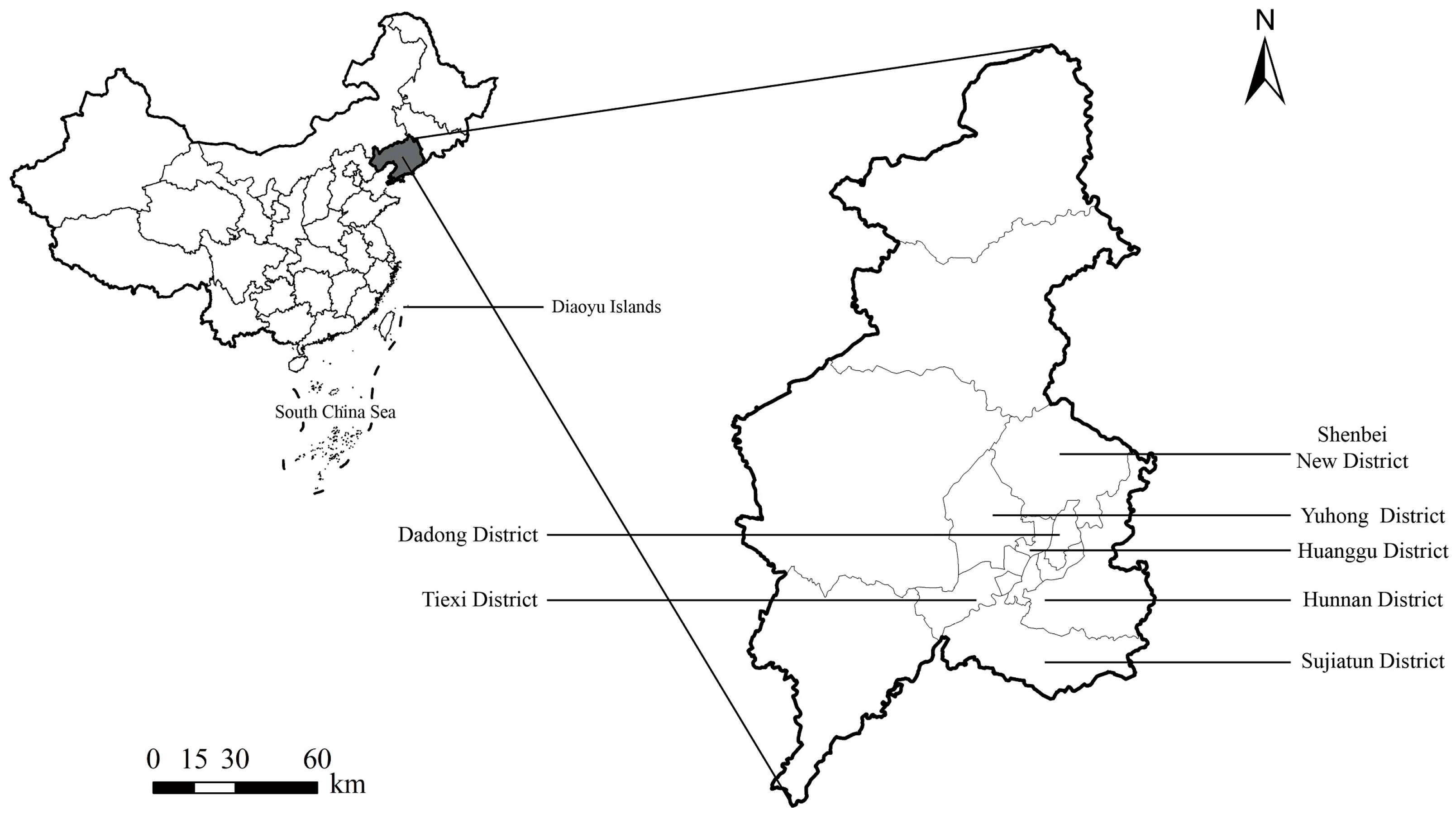
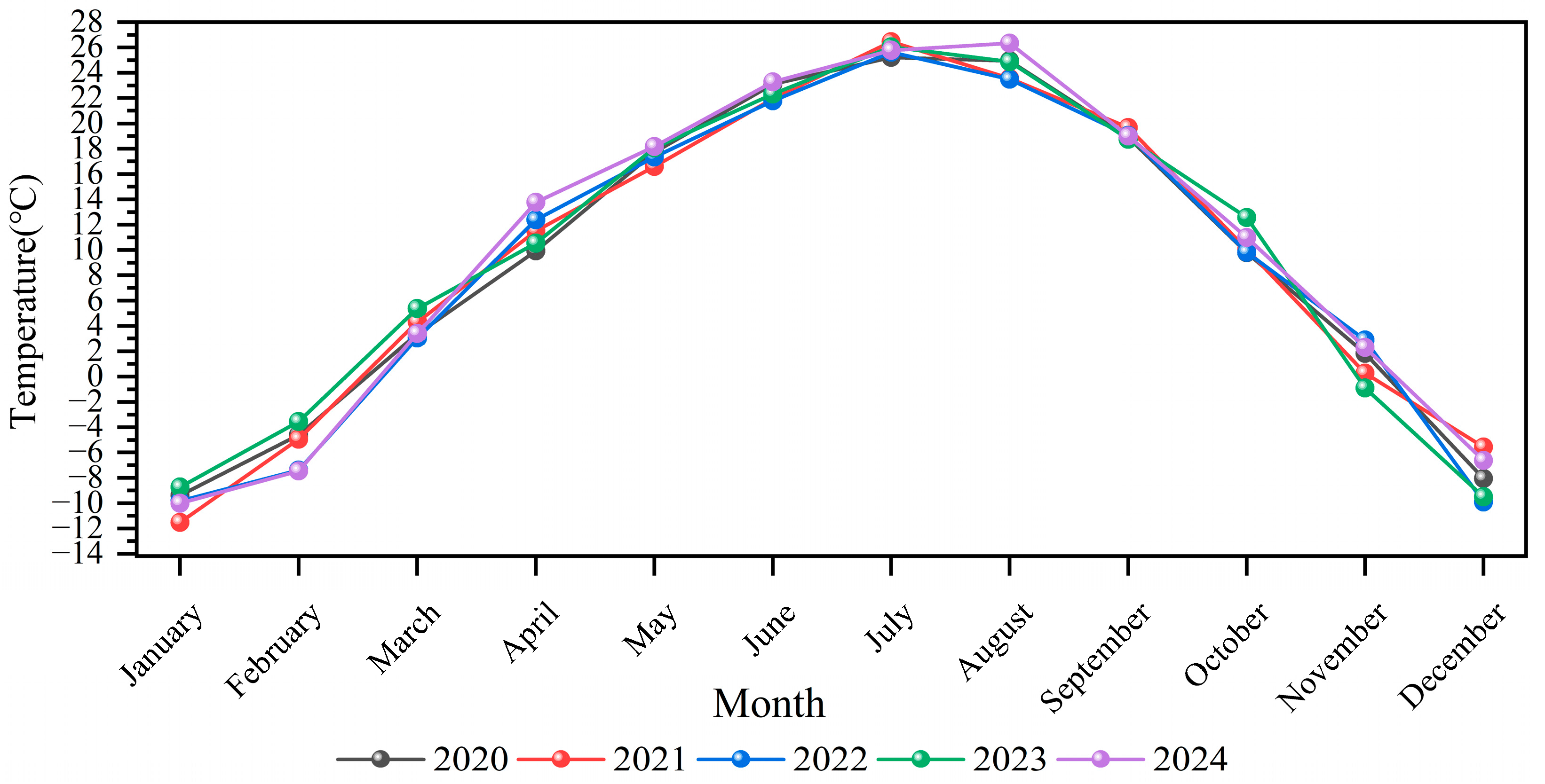
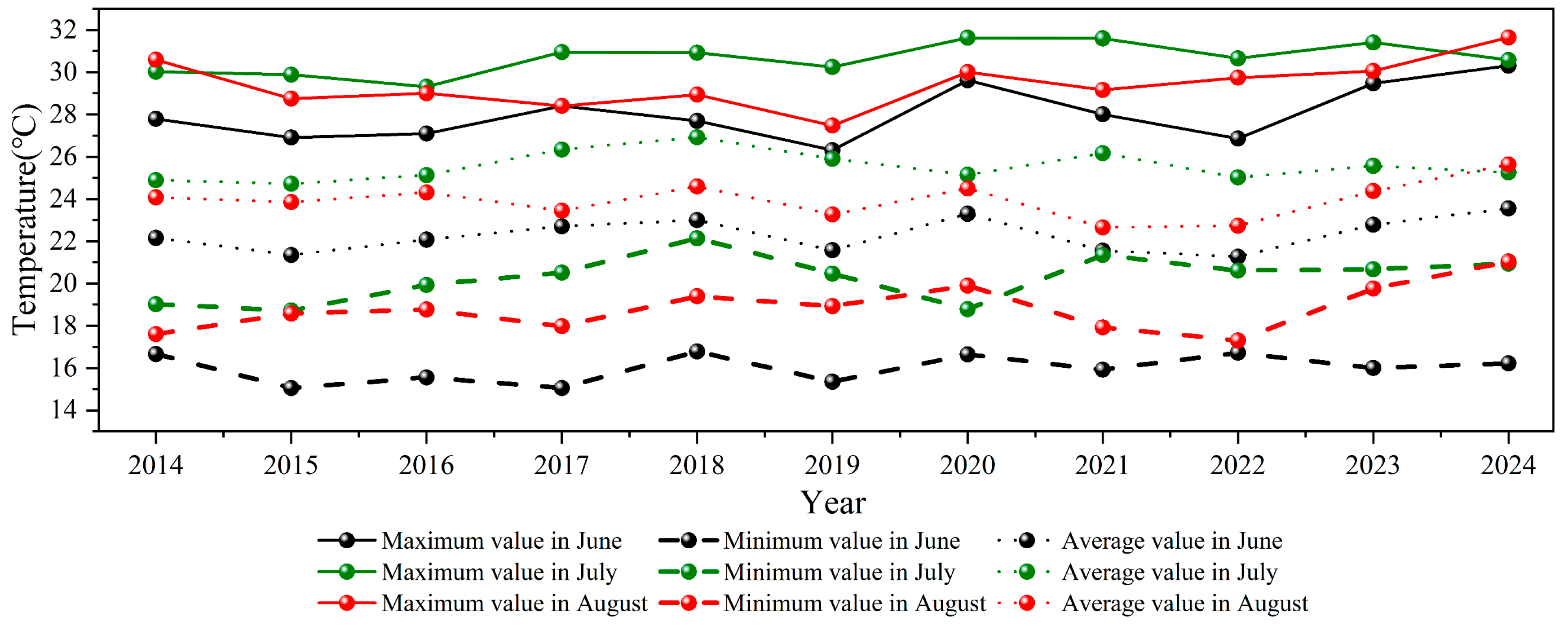


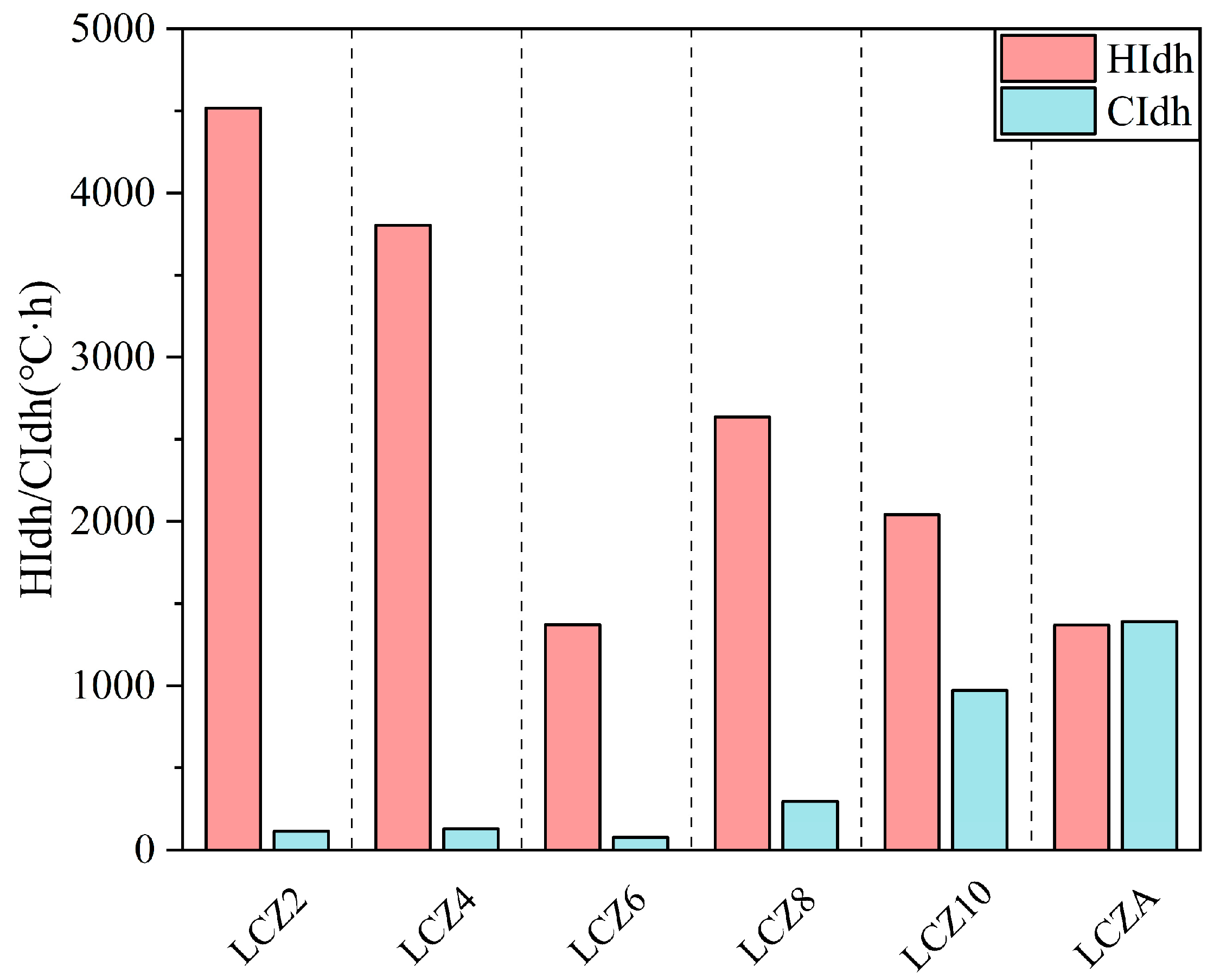






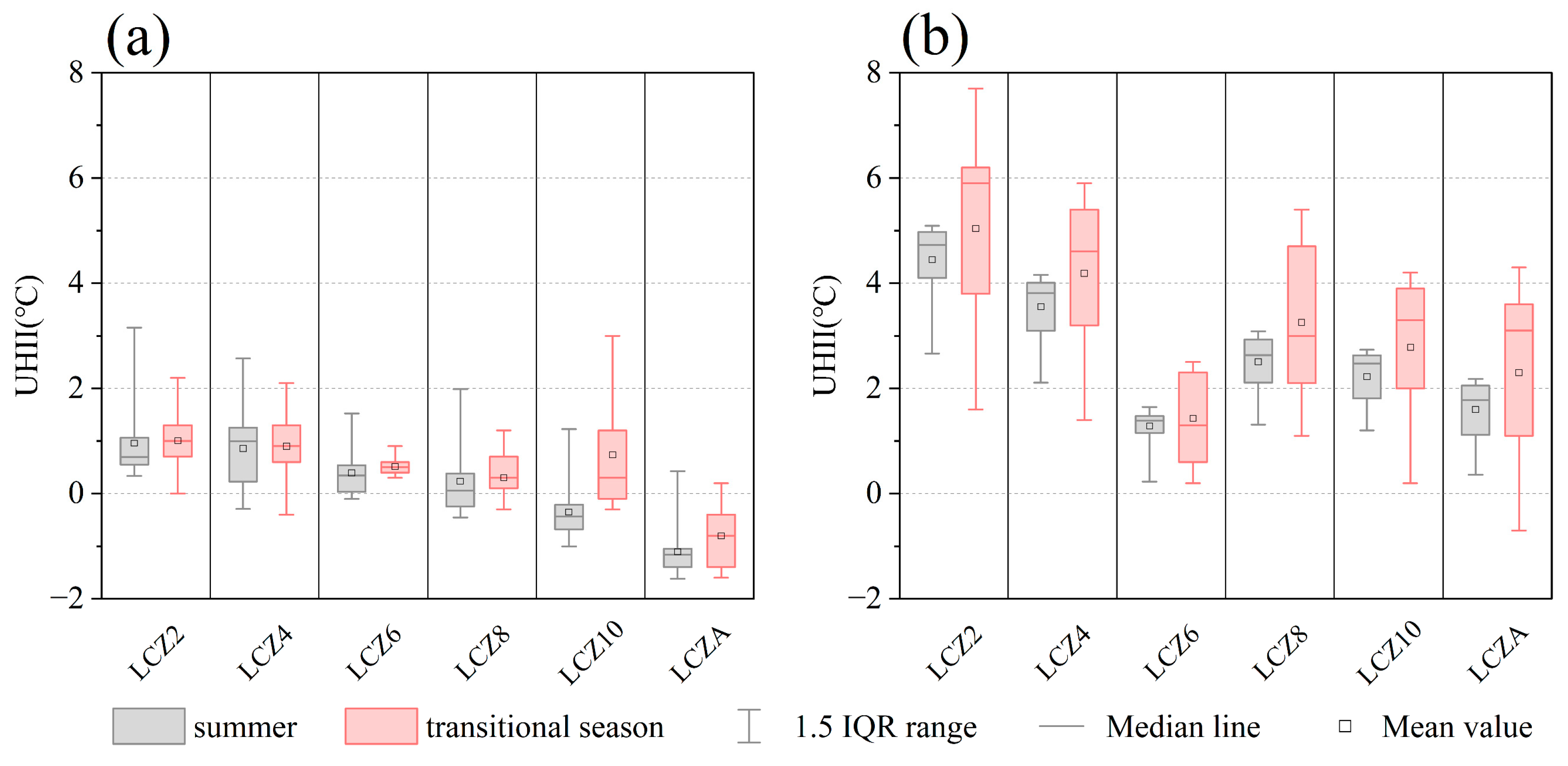
| LCZ | Actual Morphological Parameters of the Plot | LCZ Morphological Parameter Range [11] | Measuring Point and Surrounding Environment (Radius 500 m) | |
|---|---|---|---|---|
LCZ 2: Compact mid-rise | Station 1—Hunnan District |  | ||
| SVF | 0.47 | 0.3–0.6 | ||
| AR | 1.07 | 0.75–2 | ||
| BSF | 37.08% * | 40–70% | ||
| ISF | 46.75% | 30–50% | ||
| HRE | 23 m | 10–25 m | ||
LCZ 4: Open high-rise | Station 2—Hunnan District | 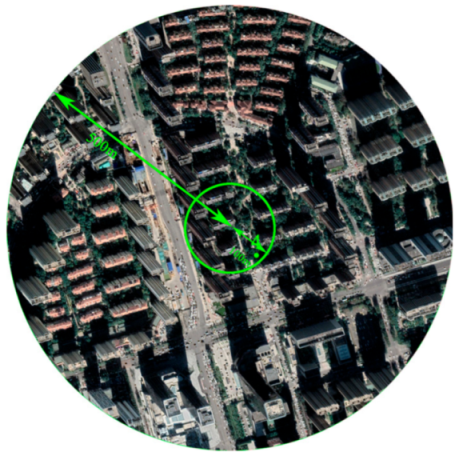 | ||
| SVF | 0.55 | 0.5–0.7 | ||
| AR | 0.96 | 0.75–1.25 | ||
| BSF | 22.17% | 20–40% | ||
| ISF | 39.51% | 30–40% | ||
| HRE | 51 m | >25 m | ||
LCZ 6: Open low-rise | Station 4—Sujiatun District |  | ||
| SVF | 0.91 * | 0.6–0.9 | ||
| AR | 0.19 * | 0.3–0.75 | ||
| BSF | 18.84% * | 20–40% | ||
| ISF | 21.18% | 20–50% | ||
| HRE | 3 m | 3–10 m | ||
LCZ 8: Large low-rise | Station 5—Dongling District | 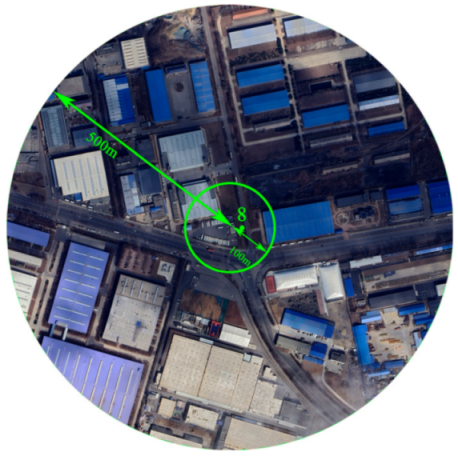 | ||
| SVF | 0.91 | >0.7 | ||
| AR | 0.07 * | 0.1–0.3 | ||
| BSF | 32.83% | 30–50% | ||
| ISF | 40.02% | 40–50% | ||
| HRE | 7 m | 3–10 m | ||
LCZ 10: Heavy industry | Station 6—Tiexi District |  | ||
| SVF | 0.89 | 0.6–0.9 | ||
| AR | 0.18 * | 0.2–0.5 | ||
| BSF | 15.65% * | 20–30% | ||
| ISF | 39.14% | 20–40% | ||
| HRE | 7 m | 5–15 m | ||
LCZ A: Dense trees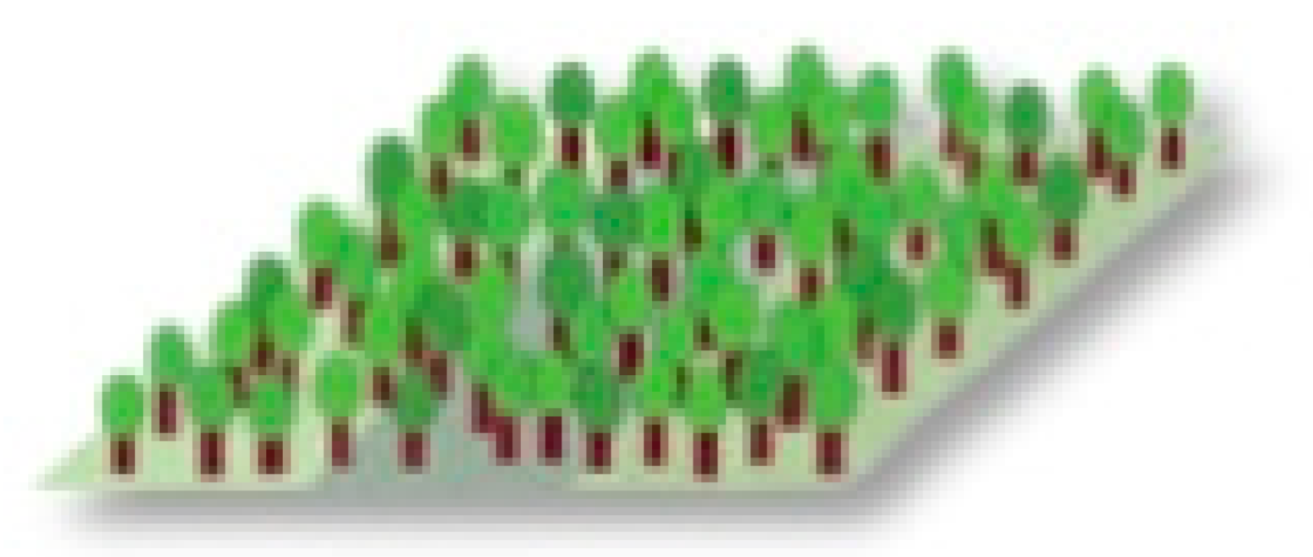 | Station 7—Sujiatun District |  | ||
| SVF | - | <0.4 | ||
| AR | >1 | >1 | ||
| BSF | 0.52% | <10% | ||
| ISF | 0.92% | <10% | ||
| HRE | 3 m | 3–30 m | ||
LCZ D: Low plants | Station 8—Sujiatun District | 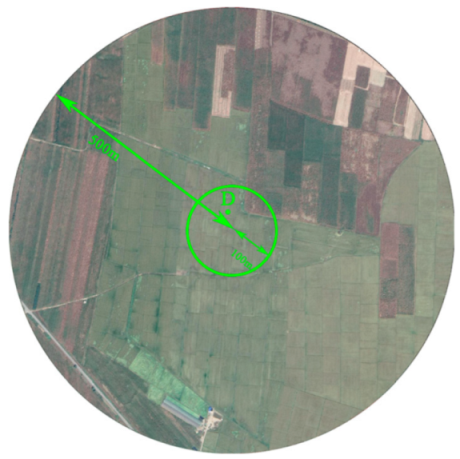 | ||
| SVF | 1 | >0.9 | ||
| AR | - | <0.1 | ||
| BSF | 0.00% | <10% | ||
| ISF | 0.58% | <10% | ||
| HRE | 0 m | <1 m | ||
| Meteorological Parameters | Instrument Model | Measuring Range | Accuracy |
|---|---|---|---|
| Air Temperature (Ta) °C | HOBO MX2301A Temperature and humidity meter recorder | −40 ~ 70 °C | ±0.2 °C |
| Stage | Early-Summer (S1) | Mid-Summer (S2) | Peak-Summer (S3) | Late-Summer (S4) |
|---|---|---|---|---|
| Number of ideal days | 4 | 28 | 5 | 8 |
Disclaimer/Publisher’s Note: The statements, opinions and data contained in all publications are solely those of the individual author(s) and contributor(s) and not of MDPI and/or the editor(s). MDPI and/or the editor(s) disclaim responsibility for any injury to people or property resulting from any ideas, methods, instructions or products referred to in the content. |
© 2025 by the authors. Licensee MDPI, Basel, Switzerland. This article is an open access article distributed under the terms and conditions of the Creative Commons Attribution (CC BY) license (https://creativecommons.org/licenses/by/4.0/).
Share and Cite
Liu, Z.; Liu, X.; Xi, T.; Chen, J.; Yang, N.; Sun, H. Thermal Environment Characteristics of Local Climate Zones Based on Summer Stage Subdivision: An Observational Study in Shenyang, China. Land 2025, 14, 2332. https://doi.org/10.3390/land14122332
Liu Z, Liu X, Xi T, Chen J, Yang N, Sun H. Thermal Environment Characteristics of Local Climate Zones Based on Summer Stage Subdivision: An Observational Study in Shenyang, China. Land. 2025; 14(12):2332. https://doi.org/10.3390/land14122332
Chicago/Turabian StyleLiu, Zheming, Xinyu Liu, Tianyu Xi, Jiawei Chen, Nuannuan Yang, and Haibo Sun. 2025. "Thermal Environment Characteristics of Local Climate Zones Based on Summer Stage Subdivision: An Observational Study in Shenyang, China" Land 14, no. 12: 2332. https://doi.org/10.3390/land14122332
APA StyleLiu, Z., Liu, X., Xi, T., Chen, J., Yang, N., & Sun, H. (2025). Thermal Environment Characteristics of Local Climate Zones Based on Summer Stage Subdivision: An Observational Study in Shenyang, China. Land, 14(12), 2332. https://doi.org/10.3390/land14122332







